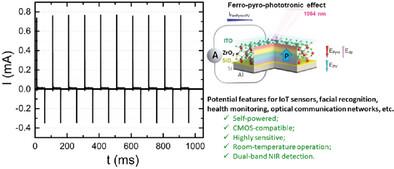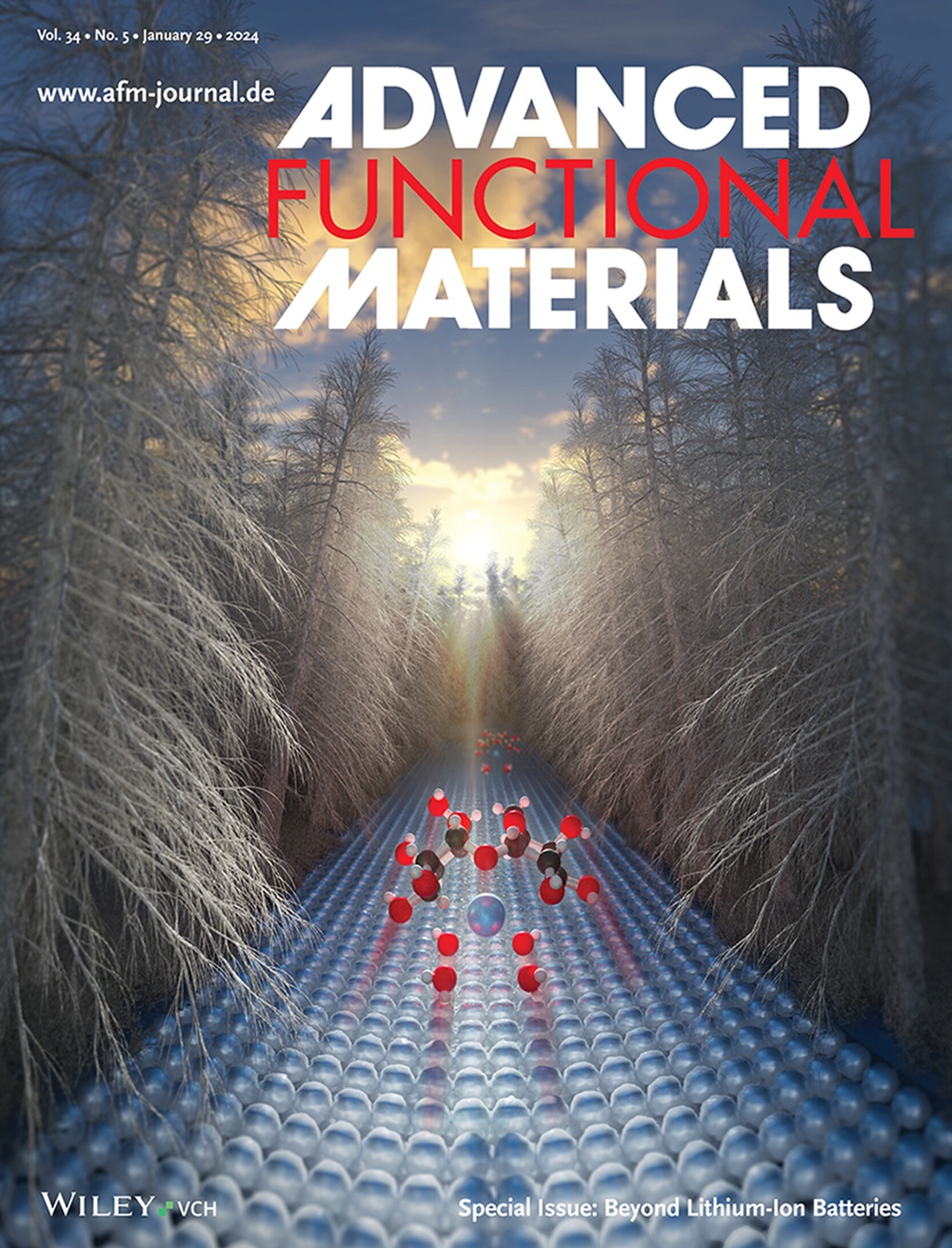Ultra‐Sensitive, Self‐powered, CMOS‐Compatible Near‐Infrared Photodetectors for Wide‐Ranging Applications
IF 18.5
1区 材料科学
Q1 CHEMISTRY, MULTIDISCIPLINARY
引用次数: 0
Abstract
Self‐powered near‐infrared (NIR) photodetectors are essential for surveillance systems, sensing in IoT electronics, facial recognition, health monitoring, optical communication networks, night vision, and biomedical imaging. However, silicon commercial detectors need external power to operate and cooling to suppress large dark currents. This work demonstrates a new class of CMOS‐compatible self‐powered NIR photodetector based on ferroelectric 5‐nm thick ZrO

用于大范围应用的超灵敏、自供电、CMOS 兼容型近红外光电探测器
自供电的近红外(NIR)光电探测器对于监控系统、物联网电子设备中的传感、面部识别、健康监测、光通信网络、夜视和生物医学成像都至关重要。然而,硅商用探测器需要外接电源才能工作,并需要冷却以抑制大暗电流。这项工作展示了一种基于 5 纳米厚 ZrO2 铁电薄膜的新型 CMOS 兼容型自供电近红外光电探测器,该探测器无需冷却,因此与硅相比具有两大优势,同时性能指标相当。在室温条件下,在 940 nm 波长照明(1.4 mW cm-2 功率密度,10 Hz 重复频率)和不使用任何电源的情况下,Al/Si/SiOx/ZrO2/ITO 器件的快速上升和下降时间分别为 ≈2 和 4 µs,响应度、检测度和灵敏度值高达 ≈3.4 A W-1、1.2 × 1010 Jones 和 4.2 × 103,远远超过其他所有新兴的自供电系统。此外,还显示了对不同近红外波长的双波段近红外探测,证明了智能识别近红外目标的概念可行性。因此,该研究首次证明,将热释电效应、光电效应和铁电效应耦合在一起是一种新方法,可显著提高基于氧化锆的 CMOS 兼容型自供电光电探测器在近红外区域的性能。
本文章由计算机程序翻译,如有差异,请以英文原文为准。
求助全文
约1分钟内获得全文
求助全文
来源期刊

Advanced Functional Materials
工程技术-材料科学:综合
CiteScore
29.50
自引率
4.20%
发文量
2086
审稿时长
2.1 months
期刊介绍:
Firmly established as a top-tier materials science journal, Advanced Functional Materials reports breakthrough research in all aspects of materials science, including nanotechnology, chemistry, physics, and biology every week.
Advanced Functional Materials is known for its rapid and fair peer review, quality content, and high impact, making it the first choice of the international materials science community.
 求助内容:
求助内容: 应助结果提醒方式:
应助结果提醒方式:


